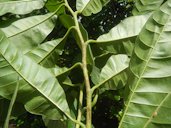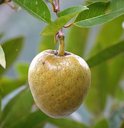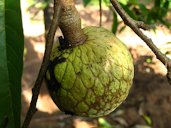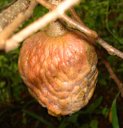| Custard apple - Annona reticulata | |||||||||||||||||||||||||||
|---|---|---|---|---|---|---|---|---|---|---|---|---|---|---|---|---|---|---|---|---|---|---|---|---|---|---|---|
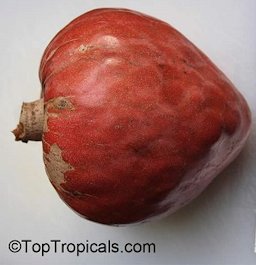 Fig. 1 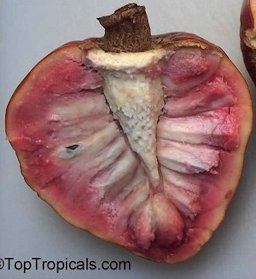 Fig. 2 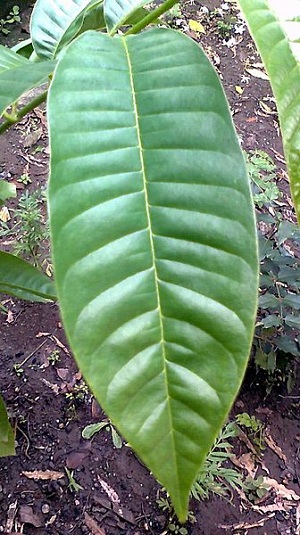 Fig. 3 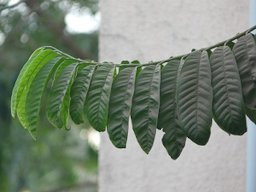 Fig. 4 A. reticulata leaf habit 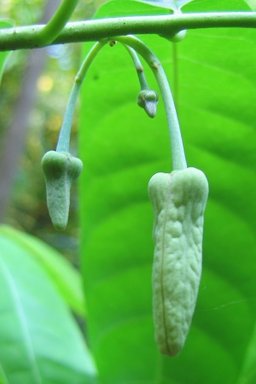 Fig. 7 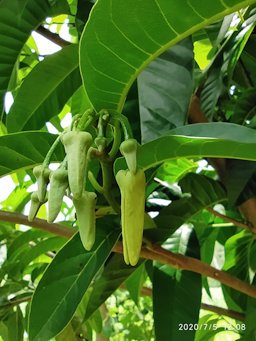 Fig. 8  Wild Sweetsop, A. reticulata West, NP, Nepal  Fig. 9  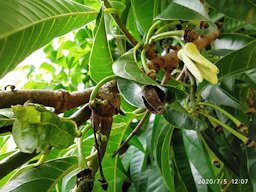 Fig. 13  Flowers and fruit forming West, NP, Nepal 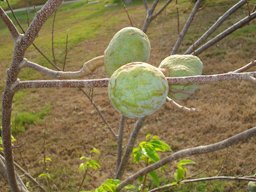 Fig. 14  Fruiting habit Accra, Ghana 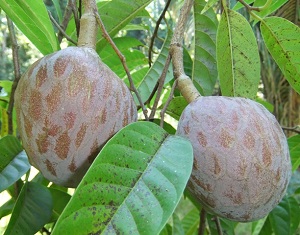 Fig. 15 Custard apple (A. reticulata), Hickatee Cottages, Punta Gorda, Toledo, Belize 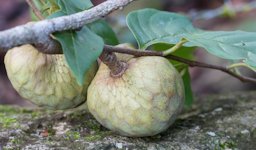 Fig. 16  A. reticulata, Nicaragua  Fig. 20  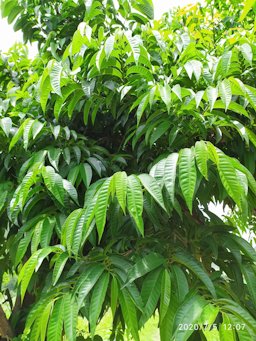 Fig. 21  Leaf habit West, NP, Nepal  Fig. 22  A. reticulata young tree  Fig. 23 Two 6-week custard apple seedlings, Chapel Hill, North Carolina ![Credit: Akshay.paramatmuni1987, Wikipedia Annona reticulata [Hindi: Ramphal], a species of Custard Apple for sale at a fruit vendor near Sangareddy, Andhra Pradesh, India.](images/AnnonaReticulataWiki300.jpg) Fig. 24  A. reticulata [Hindi: Ramphal], a species of custard apples for sale at a fruit vendor near Sangareddy, Andhra Pradesh, India 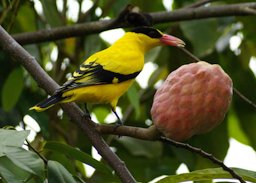 Fig. 25  Custard apple with a black-naped oriole Kajang, Selangor, Malaysia 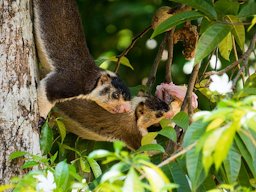 Fig. 26  Two grizzled giant squirrels (Ratufa macroura) eating custard apple (A. reticulata) in a backyard (home garden) in Narammala, India |
Scientific
name Annona reticulata L. Pronunciation ahn-NOE-nah reh-tick-yoo-LAY-tuh Common names English: bullock's-heart, custard apple, ox-heart, soursop, wild sweetsop; Spanish: anona, anona colorada, anona corazón, anonillo, corazon, corazón de buey, guanabano, mamán, suncuya (Mexico); French: annone réticulée, anone coeur-de-boeuf, cachiman, coeur de boeuf, corossol reticulé, zannone; Chinese: niu xin fan li zhi; Bahamas: custard-apple; Brazil: biribá, coracao-de-boi, coração-de-boi, fruta-de-condessa, fruta-do-conde, Cambodia: mean bat, mo bat Caroline Islands: anoonas, Cook Islands: naponapo papa‘la, tapotapo kirimoko, tapotapo papa‘a; Cuba: cherimoya, mamón; Dominican Republic: mamón de perro; Fiji: chotka sarifa, uto ni mbulumakau; French Polynesia: mafatu puakatoro, taptapu; Germany: Annone, Netz- Annone, Ochsenherz- Netzannone, Ochsenherz, Ochsenherzapfel; Haiti: cachimán, cachimán coeur de boeuf, coeur de feuf; India: ramfal; Indonesia: buah nona, serba rabsa; Italy: annona cuore di bue, annona reticolata 3 Synonyms A. reticulata var. mucosa (Jacq.) Willd.; A. reticulata var. primigenia (Standl. & Steyerm.) Lundell 4 Relatives Cherimoya (A. cherimola), soursop (A. muricata), sugar apple (A. squamosa), pond apple (A. glabra), ilama (A. diversifolia), atemoya (A. cherimola x A. squamosa) Family Annonaceae (annona family) Origin Native to Mexico, central America, and south America Uses Edible fruit; fairly attractive landscape specimen 6 Height 15-30 ft (4.5-9 m) 6 Crown Spreading crown Growth rate Fast Trunk/bark/branches Erect; trunk covered in smooth gray bark, 9-13 in. (25-35 cm) thick Pruning requirement The form of the tree may be improved by judicious pruning Leaves Deciduous; alternate; oblong or narrow-lanceolate; visible veins; have a bad smell 1 Flowers Drooping clusters; fragrant; slender; 3 outer fleshy, narrow petals; light-green externally and pale-yellow 5 Fruit Compound fruit; shape varies: heart-shaped, spherical, oblong or irregular; colorful skin with creamy, white or pale yellow pulp; very sweet, can be red or white, and tends to be gooey; 7-10 in. (17-25 cm) Season Feb. through May depending on the cultivar USDA Nutrient Content pdf Light requirement Sun Soil tolerances Does best in low-lying, deep, rich soil with ample moisture and good drainage as it will not tolerate waterlogging pH preference 7.0-8.0 Drought tolerance Less drought-tolerant than the sugar apple Cold tolerance Can survive light night frosts to 26-28°F (-2-3°C) Salt Tolerance Not highly salt-tolerant and should be protected from strong salt wind, but does well close to the ocean if they are on the lee side of a building 7 Invasive potential * None reported Pest resistance Heavily attacked by the chalcid fly Known hazard The hard seeds are very toxic, but can be swallowed whole with no ill effects; all non-fruit parts of the plant are quite toxic Reading Material Annona Reticulata, Neglected Crops The Bullock's Heart, Manual Of Tropical And Subtropical Fruits Custard Apple, Fruits of Warm Climates Annona reticulata, World Agroforestree Database Origin Although it is said that A. reticulata is a native of the Antilles. the presence in Guatemala and Belize of a wild variety, A. reticulata var. primigenia, and also of a very wide variability of cultivars suggests that this zone is the species' area of origin. It has been introduced in other regions of the American tropics and Southeast Asia, without achieving a level of importance comparable to that of A. cherimola or A. squamosa. 2 The Custard Apple is believed to be a native of the West Indies but it was carried in early times through Central America to southern Mexico. While in Hawaii it is not well known, it is commonly grown in the Bahamas and occasionally in Bermuda and southern Florida. 1
Description The fruit of the custard apple is regarded as mediocre when compared with that borne by more glamorous members of the Annona family. Nevertheless, the species has several advantages. It bears fruit over the late winter and early spring when few other crops are available. It is usually productive without hand pollination. The average fruit is large and can be of good quality. For these reasons, the custard apple deserves to be planted in south Florida where space will allow. 6
Leaves The ill-smelling leaves are deciduous, alternate, oblong or narrow-lanceolate, 4 to 8 in. (10-20 cm) long, 3/4 to 2 in. (2 5 cm) wide, with conspicuous veins. 1
Flowers The flowers that never fully open, appear in drooping clusters (Fig. 8) and they are fragrant and slender, with 3 outer fleshy, narrow petals, light-green externally and pale-yellow with a dark-red or purple spot on the inside at the base. 1
Fruit The compound fruit is 3 l/4 to 6 1/2 in (8-16 cm) in diameter and can be symmetrically heart-shaped, lopsided, irregular, nearly round, or oblate with a deep or shallow depression at the base. The skin of the fruit is thin but tough and can be yellow or brownish when ripe, with a pink, reddish or brownish-red blush. There is a thick, cream-white layer of custard like flesh beneath the skin surrounding the juicy segments. In each segment there is a single, hard, dark-brown or black, glossy seed, oblong and smooth, less than a half of inch long. There are between 55 and 76 seeds in a fruit. The ripe fruit is sweet and pleasant in flavor. The unripe fruit is rich in tannin. 1 The thick stem is inserted into a depression at the base and continues as an inedible core through the center of the fruit. 6 Mr. Har Mahdeem, popular horticultural circuit speaker and authority on Annonaceae, says about the Annona reticulata, custard-apple or Bullock's hearth (because of it's reddish color) and the importance of the location of the fruit on the branch as being very important for this annona. The fruit should be closer to the trunk of the tree instead of at the end of branches. The fruit will have all the benefits of the sap traveling from the leaves exposed to the sun. An added benefit is reducing the likelihood of the branch breaking. He suggests to bag the fruit when very small to prevent the annona seed borer from attaking the fruit. Use a large bag as the fruit will be big.
Varieties Several superior cultivars have been selected. These include 'Benque', which produces a large fruit with dark-pink pulp; 'Canul', which produces a medium -size fruit with red skin and purplish red pulp; 'San Pablo', which produces a large, high-quality fruit with pink flesh: 'Sartenaya', a well regarded variety which produces a medium-size fruit with pink flesh; and 'Tikal', a variety said to produce a fruit of very good quality. 6 The varieties suggested by Mr. Mahdeem are the 'Sartenaya' (seedling) or the 'San Pablo' (seedling) as being above average in quality, not gritty, and very productive. Varieties Page Harvesting A mature, well tended tree may bear 100 pounds of fruit. The fruit is harvested when it has attained full size and lost its green color. The fruit softens slightly as it ripens, with the skin yielding to gentle pressure. 6 The skin is very thin and the fruit must therefore be handled carefully. 2 Propagation Seed is the usual means of propagation. Nevertheless, the tree can be multiplied by inarching, or by budding or grafting onto its own seedlings or onto soursop, sugar apple or pond apple rootstocks. Experiments in Mexico, utilizing cherimoya, llama, soursop, custard apple, Annona sp. Af. lutescens and Rollinia jimenezii Schlecht. as rootstocks showed best results when custard apple scions were side-grafted onto self-rootstock, soursop, or A. sp. Af. lutescens. Custard apple seedlings are frequently used as rootstocks for the soursop, sugar apple and atemoya. 1
Grafting Annonas in Southern Florida, Hort Science pdf Culture It is a hardy tree requiring little care. It is not particular as to soil type, growing in sand and on the oolitic limestone of Miami-Dade County. It does, however, require proper drainage. 6 The tree is fast-growing and responds well to mulching, organic fertilizers and to frequent irrigation if there is dry weather during the growing period. 1 In Florida, the tree sheds most of its leaves over the cooler months. 6 Mr. Mahdeem says that he had seen annona trees dying from too much fruiting. He recommends to remove the fruit when it is the size of a fingernail. The fruit has more flavor than the sugar apple; it's perfume is strong with a sweet-tart taste. It can be 'sandy'. Pruning The form of the tree may be improved by judicious pruning. 1 Pests The custard apple is heavily attacked by the chalcid fly. Many, if not all of the fruits on a tree may be dried up before maturity. In India, the ripening fruits are covered with bags or nets to avoid damage from fruit bats. 5 One of the major problems with custard apple has to do with the season when it matures; there are not many other annona fruit and the annona seed borer over-winters in the custard apple. 7 Diseases A dry charcoal rot was observed on the fruits in Assam in 1947. In 1957 and 1958 it made its appearance at Saharanpur. The causal fungus was identified as Diplodia annonae. The infection begins at the stem end of the fruit and gradually spreads until it covers the entire fruit. 1 Food Uses When fully ripe the fruit is soft to the touch and the stem and attached core can be easily pulled out. The flesh may be scooped from the skin and eaten as it is or served with light cream and sugar. Often is added to milk shakes, custards or ice cream. 1
Medicinal Properties ** A root decoction is taken as a febrifuge, while fragments of the root bark are packed around the gums to relieve toothache. The bark is very astringent and the decoction is taken as a tonic and also as a remedy for diarrhea and dysentery. The unripe dried fruit is employed against diarrhea and dysentery. In severe cases, the leaves, bark and green fruits are all boiled together for 5 minutes in a liter of water to make an extremely potent decoction. 1 Toxicity The seed kernels are very toxic. The seeds, leaves and young fruits have insecticidal effect. The leaf juice kills lice. Sap from cut branches is acrid and irritant and can severely injure the eyes. The bark contains 0.12% anonaine. Injection of an extract from the bark caused paralysis in a rear limb of an experimental toad. 1 Other Uses (indigenous) The leaves have been employed in tanning and they yield a blue or black dye. A fiber derived from the young twigs is superior to the bark fiber from Annona squamosa, the Sugar Apple. Custard Apple wood is yellow, soft, fibrous but durable, moderately close-grained and it has been used to make yokes for oxen. 1 General The custard apple grown in Australia is a hybrid of the sugar apple (Annona squamosa) and the cherimoya (Annona cherimola). More recently, hybrids have also been developed with Annona reticulata. In America the fruit is known as Atemoya. Laurence Zill of Zill Nursery Inc. introduced the custard-apple to the market.
Other Edibles in the Annona genus: Atemoya (A. cherimola x A. squamosa) Biriba (Rollinia mucosa, A. mucosa) Cherimoya (A. cherimola) Ilama (A. macroprophyllata) Mountain Soursop (A. montana) Pond Apple (A. glabra) Poshte (A. scleroderma) Soursop (A. muricata) Sugar Apple (A. squamosa) Further Reading The Custard Apple, Tropical Fruit News, RFCI Custard Apples (Annona spp.), Neglected Crops Custard Apple Botanical Art List of Growers and Vendors |
||||||||||||||||||||||||||
| Bibliography 1 Fruits of Warm Climates. Julia F. Morton, Miami, 1987. 2 Mahdeem, H. "Custard Apples." Neglected crops: 1492 from a different perspective, FAO Plant Production and Protection Series, no. 26, Food and Agriculture Organization of the United Nations, 1994, FAO, fao.org. Accessed 29 Dec. 2014. 3 "Annona reticulata (bullock's heart)." Invasive Species Compendium, cabi.org. Accessed 26 Jan. 2016. 4 "Annona reticulata." The Plant List (2013), Version 1.1, www.theplantlist.org. Accessed 26 Jan. 2016. 5 Orwa C, et al. "Annona reticulata L." Agroforestree Database: a tree reference and selection guide version 4.0., 2009, worldagroforestry.org. Accessed 26 Jan. 2016. 6 Boning, Charles R. Florida's Best Fruiting Plants- Native and Exotic Trees, Shrubs, and Vines. Sarasota, Pineapple Press, 2006. 7 Joyner, Gene. The Custard Apple. Rare Fruit Council International Miami RFCI, Tropical Fruit News, May 1994. Videos v1 "All About Custard Apples." Truly Tropical, 5 Apr. 2018, (CC0), www.youtube.com/watch?v=_j4z5yo7tkU. Accessed 2 Aug. 2021. v2 "Annonas with Har, Custard Apple (Annona reticulata)." Truly Tropical, 13 Jan. 2021, (CC0), www.youtube.com/watch?v=6yuc4eUd4WI. Accessed 2 Aug. 2021. v3 "How to Graft Annona Fruit Trees Using Cleft Graft - Grafting Dream Cherimoya, Atemoya, etc." Sulcata Grove, 26 Feb. 2017, www.youtube.com/watch?v=1_Xy-rZQmdg. Accessed 23 July 2021. v4 "How to Tell When a Custard Apple is Ripe - Cotton Candy Fruit!" Miami Fruit, Producer Caitlin Shoemaker, 31 May 2017, (CC0), www.youtube.com/watch?v=oGTfSaW0ulc. Accessed 2 Aug. 2021. Photographs Fig. 1,22 "Annona Reticulata." Top Tropicals, toptropicals.com/pics/garden/m2/2012/canon/IMG_1820Annona_reticulata_TA.jpg. Accessed 2 Aug. 2021. Fig. 2 "Annona Reticulata." Top Tropicals, toptropicals.com/pics/garden/m2/2013/olymp2/P5152918a_Annona_reticulata_TA.jpg. Accessed 2 Aug. 2021. Fig. 3 ABHIJEET. "Ramphal tree leaf Chinawal, India." Wikimedia Commons, 2014, (CC BY-SA 3.0), commons.wikimedia.org. Accessed 26 Jan. 2016. Fig. 4 Valke, Dinesh. "Annonaceae (custard apple, sugar apple, or soursop family) Annona reticulata." Flickr, 2008, (CC BY-NC-ND 2.0), flickr.com. Accessed 26 Jan. 2016. Fig. 5 Judgefloro. "Annonas leaves." Wikimedia Commons, 28 Oct. 2020, (CC0), commons.wikimedia.org/wiki/File:6389Anonas_leaves_30.jpg. Accessed 2 Aug. 2021. Fig. 6 Judgefloro. "Annonas leaves." Wikimedia Commons, 28 Oct. 2020, (CC0), commons.wikimedia.org/wiki/File:6389Anonas_leaves_17.jpg. Accessed 2 Aug. 2021. Fig. 7 Vinayaraj. "Annona reticulata bud." Wikimedia Commons, 2008, commons.wikimedia.org. Accessed 31 Dec. 2014. Fig. 8,13,21 Gyawali, Bikram. "Wild Sweetsop, Annona reticulata. West, NP, Nepal." iNaturalist, Research Grade, 7 July 2020, (CC BY-NC 4.0), www.inaturalist.org/observations/52452003. Accessed 1 Aug. 2021. Fig. 9,10,11 Montiel, O. M. "Annona reticulata L., Nicaragua." World Flora Online, WFO (2021), (CC BY-NC-ND 3.0), Image cropped, www.worldfloraonline.org/taxon/wfo-0000537905. Accessed 1 Aug. 2021. Fig. 12 Ks.mini. "Annona reticulata Family: Annonaceae." Wikimedia Commons, 17 May 2011, (CC BY-SA 3.0), commons.wikimedia.org/wiki/File:Annona_reticulata_flower.JPG. Accessed 2 Aug. 2021. Fig. 14 Johnson, Timothy. "Wild Sweetsop, Annona reticulata. Accra, Ghana." iNaturalist, Research Grade, 11 June 2020, (CC BY-NC 4.0), www.inaturalist.org/observations/49197389. Accessed 1 Aug. 2021. Fig. 15 Morton, Ian. "Custard apple (Annona reticulata), Hickatee Cottages, Punta Gorda, Toledo, Belize." Wikimedia Commons, 2011, (CC BY-NC-ND 2.0), commons.wikimedia.org. Accessed 26 Jan. 2016. Fig. 16 Montiel, O. M. "Annona reticulata L., Nicaragua." Tropicos®, Missouri Botanical Garden, no. 38512, www.tropicos.org/name/1600671. Accessed 2 Aug. 2021. Fig. 17 Sivavkm. "Annona reticulata, Custard Apple." Wikimedia Commons, 2014, (CC BY-SA 3.0), commons.wikimedia.org. Accessed 26 Jan. 2016. Fig. 18 Kalakki. "Custard Apple." Wikimedia Commons, Malayalam Wikipedia, 25 Nov. 2007, (CC BY 2.5), commons.wikimedia.org/wiki/File:Aathachakka.JPG. Accessed 3 Aug. 2021. Fig. 19 Aruna. "Custard Apple." Wikimedia Commons, via Malayalam Wikipedia, 25 Nov. 2007, (CC BY-SA 3.0), GFDL, commons.wikimedia.org/wiki/File:Custard-apple.JPG. Accessed 3 Aug. 2021. Fig. 20 "Annona Reticulata seeds." Top Tropicals, toptropicals.com/pics/garden/m2/2012/olymp/9/P4209236Annona_reticulata_TA.jpg. Accessed 2 Aug. 2021. Fig. 23 Davidals. "Two 6-week custard apple seedlings, Chapel Hill, North Carolina." Wikimedia Commons, 2010, GFDL, commons.wikimedia.org. Accessed 26 Jan. 2016. Fig. 24 Akshay.paramatmuni1987. "Annona reticulata [Hindi: Ramphal], a species of Custard Apple for sale at a fruit vendor near Sangareddy, Andhra Pradesh, India." Wikipedia, 2013, (CC BY-SA 3.0), wikipedia.org. Accessed 26 Jan. 2016. Fig. 25 Mat-Salleh, Kamarudin. "A ripe custard-apple (Annona reticulata) in a custard-apple tree, about to be fed upon by a Black-naped Oriole." Wikimedia Commons, Kajang, Selangor, Malaysia, 2008, (CC BY 2.0), commons.wikimedia.org. Accessed 8 Feb. 2016. Fig. 26 Fernando, Lahiru Prabudda. "Two Grizzled Giant Squirrel (Ratufa macroura) eating custard apple (Annona reticulata) in a backyard (home garden) in Narammala, Sri Lanka." Wikimedia Commons, 18 Nov. 2019, (CC BY-SA 4.0), commons.wikimedia.org/wiki/File:Two_Giant_squirrels_eating_custard_apple,_Sri_Lanka.jpg. Accessed 2 Aug. 2021. Fig. 27 Anuragi, H., et al. "Molecular diversity of Annona species and proximate fruit composition of selected genotypes." 3 Biotech, Springer Nature, 23 Sept. 2016, (CC BY 4.0), doi.org/10.1007/s13205-016-0520-9. Accessed 5 Aug. 2021. * UF/IFAS Assessment of Non-native Plants in Florida's Natural Areas ** Information provided is not intended to be used as a guide for treatment of medical conditions. Published 12 Apr. 2014 LR. Last update 27 Aug. 2021 LR |
|||||||||||||||||||||||||||
